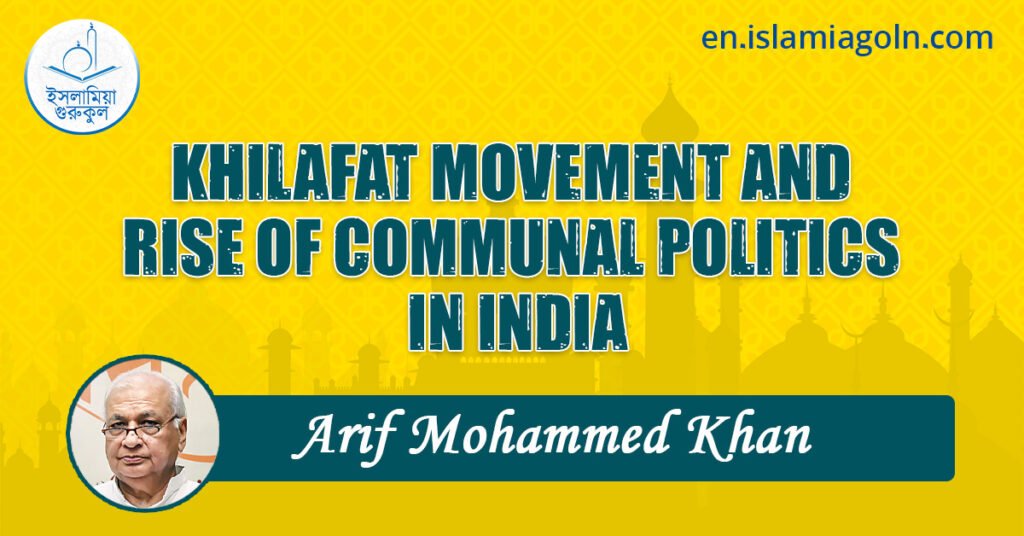Today’s Topic of Discussion: KHILAFAT MOVEMENT AND RISE OF COMMUNAL POLITICS IN INDIA
KHILAFAT MOVEMENT AND RISE OF COMMUNAL POLITICS IN INDIA
Since we are still debating the factors and actors responsible for the rise of the communal divide and the Partition of india, it is fair to have a fresh look at the Khilafat Movement (1919-1924) and its impact on subsequent political events.
The Khilafat agitation was essentially the response of the Indian Muslim clergy to the post-World War I developments in distant Turkey.
In this war Turkey had sided with Germany and as vanquished party had to accept humiliating conditions dictated by Britain and Allies.
It is important to remember that much before the war the internal crisis had started consuming the Ottoman Empire. In 1909, the Young Turks entered the palace of Sultan Abdul Hameed and had deposed him. Around this time the Arabs had also started giving expression to nationalist aspirations to secure their independence. During the war the Arabs revolted against the Sultan and joined the Allied forces in 1916. who in turn promised them freedom and self-rule.
But in India which had no historical ties with the Ottoman Caliphate. the Muslim clergy held that the survival of Caliphate was vital for the survival of Islam. They organized themselves to defend Ottoman Caliphate and constituted an All India Khilafat Committee The first meeting of the committee was held on 23 November 1919 in Delhi. Mahatma Gandhi attended the meeting and subsequently assumed the leadership of the movement and went around the country addressing large gatherings from the pulpit of almost every major Mosque.
The Khilafat Conference held in Calcutta in February 1920 asserted that ‘the Islamic Shariat (law) requires the presence of a Caliph and Imam in every age. Caliph meant a Muslim ruler with dominion and sovereign authority to defend the Muslim populations and enforce Islamic law’.
The Khilafat Committee stressed that the Ottoman Sultan was the ‘Universal Caliph to whom all Muslims including those living outside his dominion owed allegiance It further asserted that ‘obedience and assistance to Ottoman Sultan is obligatory’ and ‘any Muslim disobeying the commands of Sultan shall automatically go beyond the pale of Islam’.
During the course of next four years, Khilafat grew into a strong anti-British movement resorting to civil disobedience and enacting the fiasco of migration of more than a lakh of Muslims to Afghanistan. The Moplah rebellion and Chauri Chaura violence which forced Gandhiji to withdraw from the movement were byproducts of this agitation.
The Khilafat leaders interpreted the losses of Turkey in terms of conflict between the Christian World and Islam ignoring the fact that Turkey had participated in a war fought by Christian powers on both the sides. The clergy in pursuit of their pan-Islamic agenda became totally oblivious both to the feelings of Young Turks and Arab national aspirations.
Qazı Addel Abbasi in his book Tehreek Khilafat has recorded that on the occasion of the foundation stone laying ceremony of Jamia Millia, Maulana Mahmood Hasan on seeing a man dressed in Arab attire commented that I hate this dress, it is the attire of the traitors’.
It is paradoxical that when the young leadership of Turkey was rising to take their country on the path of modernism and progress and the Arabs were asserting their right to self-rule, the leaders of the Indian freedom movement were striving to protect a decaying despotic regime in the name of religion.
The movement failed miserably as the Turks themselves abolished the Khilafat but it succeeded in introducing religiosity as credible instrument of political mobilisation. What role this religiosity’ played in shaping the future politics, particularly the events of 1947 surely needs reappraisal.
See more:

